City trip to Paris: a day at Les Halles.
Emile Zola described les Halles as the belly of Paris, the district in the heart of the city where tons of meat and vegetables were traded for 800 years. It feels joyful to stroll through the cozy streets and ancient squares of the 1st arrondissement. I start at the beautiful Place des Victoires in search of some not-to-miss treasures.
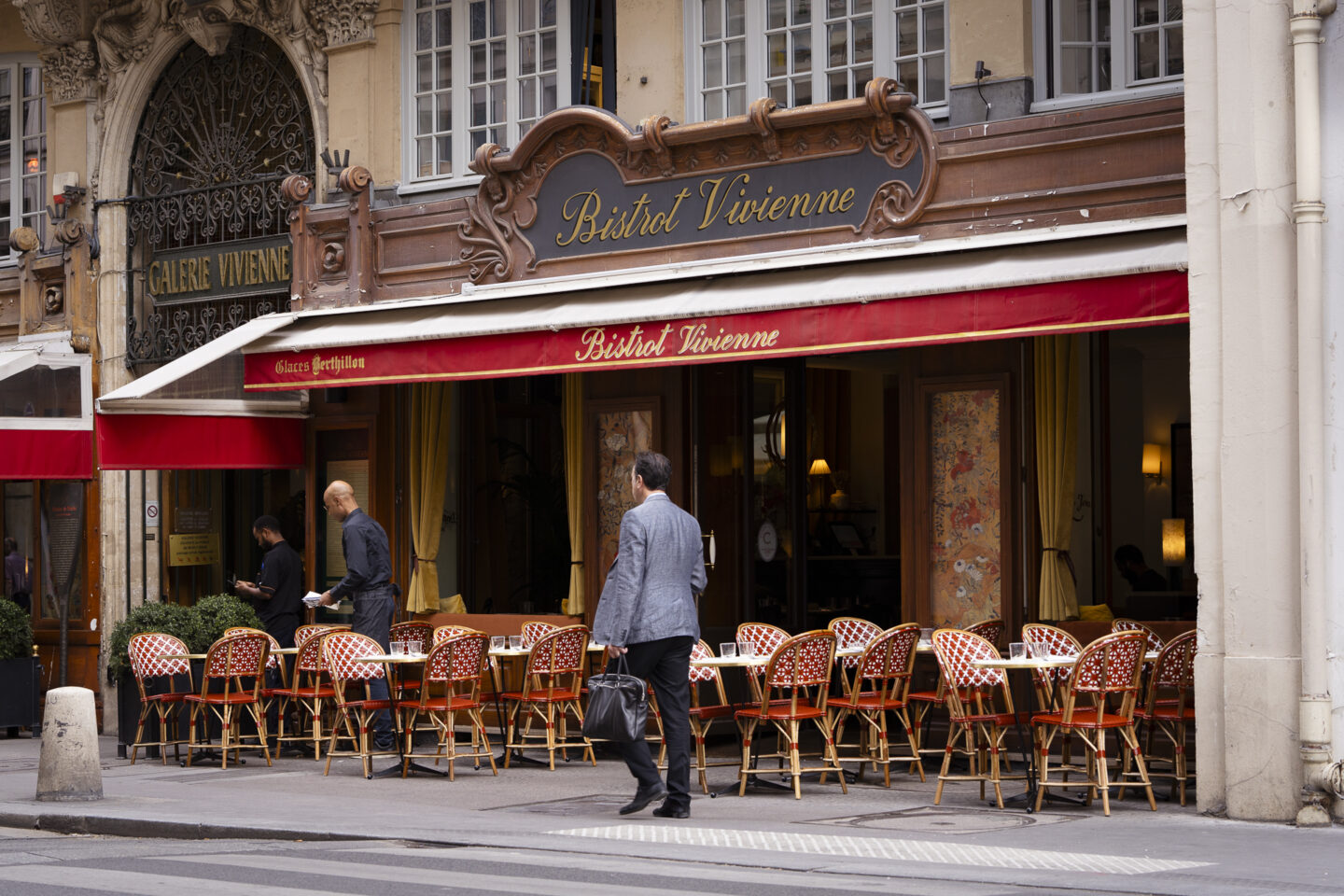
Galerie Vivienne: full of historic charm
The Galerie Vivienne is one of the hidden gems among the iconic arcaded galleries in the metropolis. The place is all charm and history. The gallery dates back to the early 19th century and is built in neoclassical style. Light streams through the glass roof, highlighting the brilliant, colorful mosaics on the floor. Visit the cozy boutiques or enjoy a light meal overlooking an extraordinary setting. Next to the Galerie Vivienne is the Galerie Colbert with its imposing glass dome.
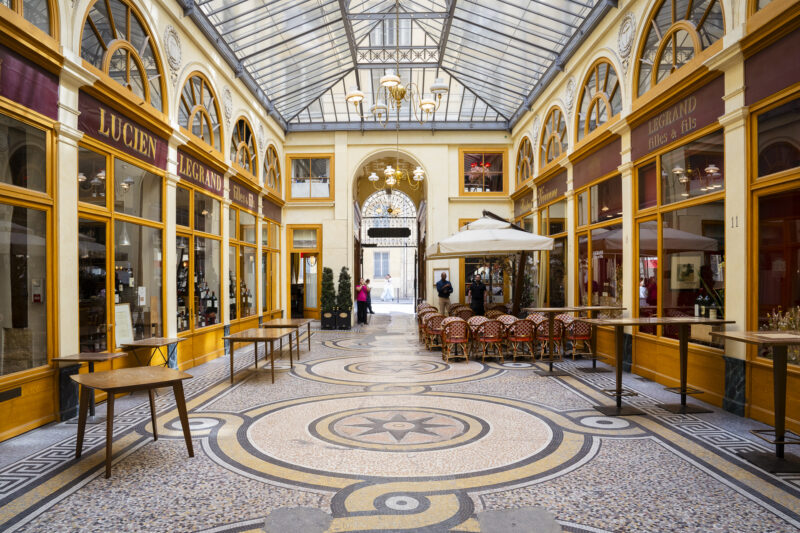
Rue Montorgueil: a gourmet destination
The medieval street, rue Montorgueil, stretches from St. Eustachius Church to the neighborhood Sentier and is a lively, bustling shopping street filled with cozy restaurants, cafes and convenience stores. The crowd is local and touristy, which gives the street an authentic, vibrant vibe.
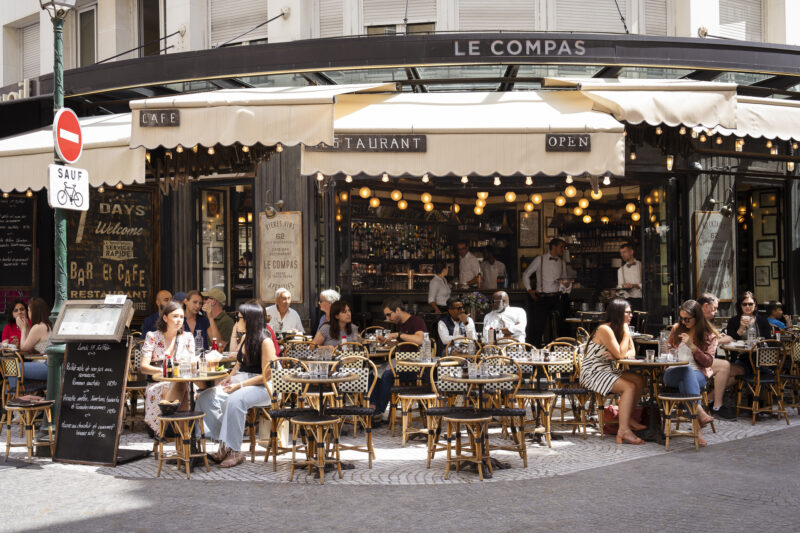
I have two items on my gourmet list: the historic patisserie Stohrer and the restaurant l'Escargot.
Patisserie Stohrer, oldest patisserie in Paris
Rue Montorgueil 51 is the address of the oldest patisserie in Paris, the place where Nicolas Stohrer opened his pastry shop in 1730. By itself, the building is worth a visit. With its opulent decor, it is listed as a historical monument. It was designed by a pupil of Paul Baudry, the well-known painter responsible for the magnificent decor of the foyer of the Palais Garnier opera house.
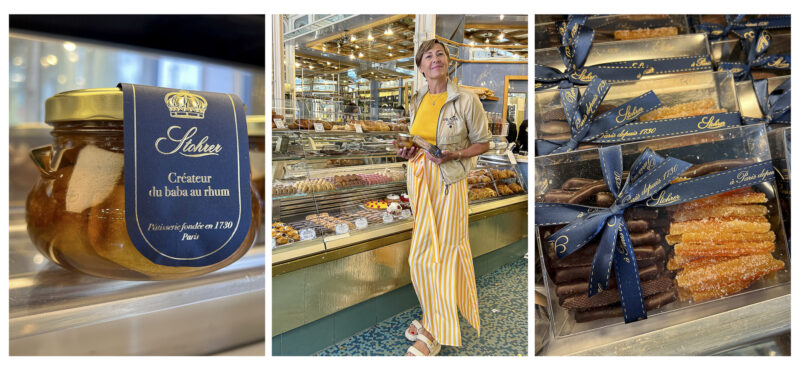
A Polish pastry chef with a vision
The story of culinary visionary Nicolas Stohrer begins in 1725, when the daughter of King Stanislas I of Poland came to Paris to marry King Louis XV. In her luggage, the princess Marie Leszczynska, also brought her father's favorite pastry chef. Five years after his arrival in the metropolis, Stohrer opened his own patisserie to the greatest pleasure of Parisians.
Stohrer rises to become the godfather of patisserie. He is the inventor of many recipes that are still today the great classics of Western patisserie: baba au rum, vol au vent, crème chiboust, religieuses and the pastries puits d'amour that Louis XV sent to his mistresses as a token of his love, according to legend....
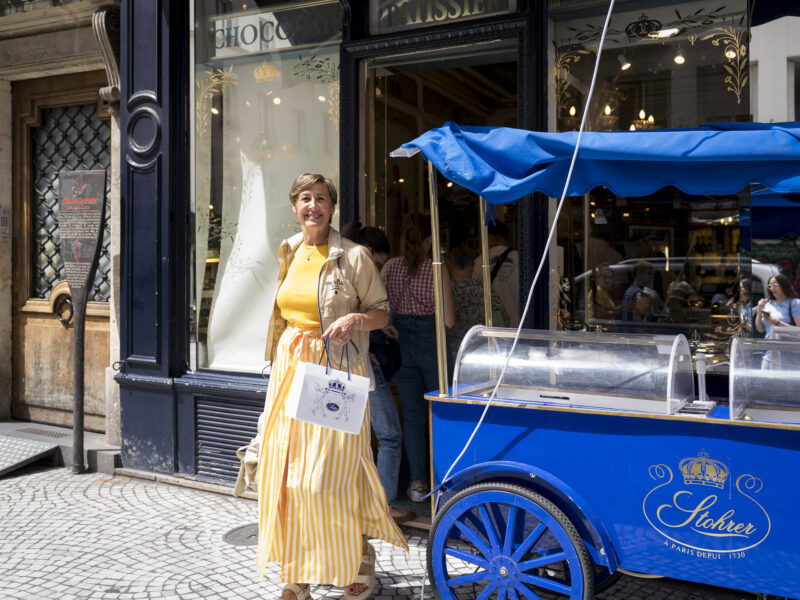
L'Escargot
Do you like classic Burgundian cuisine? Then the restaurant l'Escargot, located at 38, rue Montorgueil, is a must! You can't miss the beautiful building which is classified as a historical monument. The beautiful signboard in the shape of a large golden snail can be seen from afar.
An original restaurant
L'Escargot opened its doors in 1832 to partygoers of rebellious Paris. It is without doubt the most original restaurant on rue Montorgueil. The Napoleon III-style interior with large mirrors, dark red velvet sofas, painted ceilings and fine woodwork is a treat for the eyes. Not to mention its cozy charm. A remarkable, metal spiral staircase leads to several private rooms, including the famous Sarah Bernhardt Salon with a ceiling painted by Clairin. During its nearly 200 years of existence, l'Escargot has seen many famous names pass by: Marcel Proust, Pablo Picasso, Jean Cocteau, Salvador Dali, Charlie Chaplin and, of course, Sarah Bernhardt. They were all regular patrons.
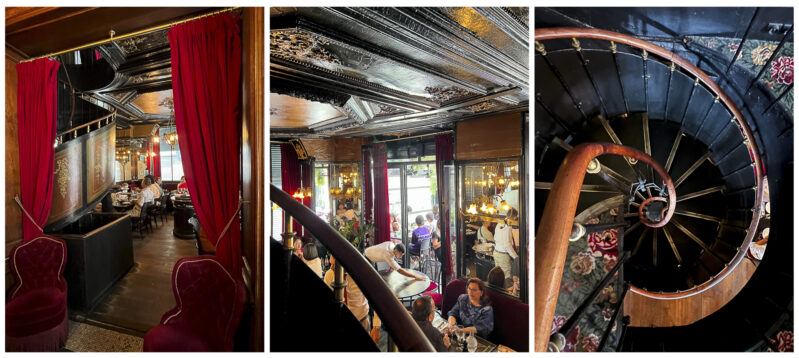
Escargots: a cult dish
The absolute star dish on the extensive menu is the Burgundy escargots. They range from the cult classic with garlic and parsley butter to more daring combinations with truffle, foie gras, brie and nuts or with piment d'Espelette. We go for tradition and spice, and we are not disappointed. The escargots are perfectly prepared, and the taste is well-balanced.
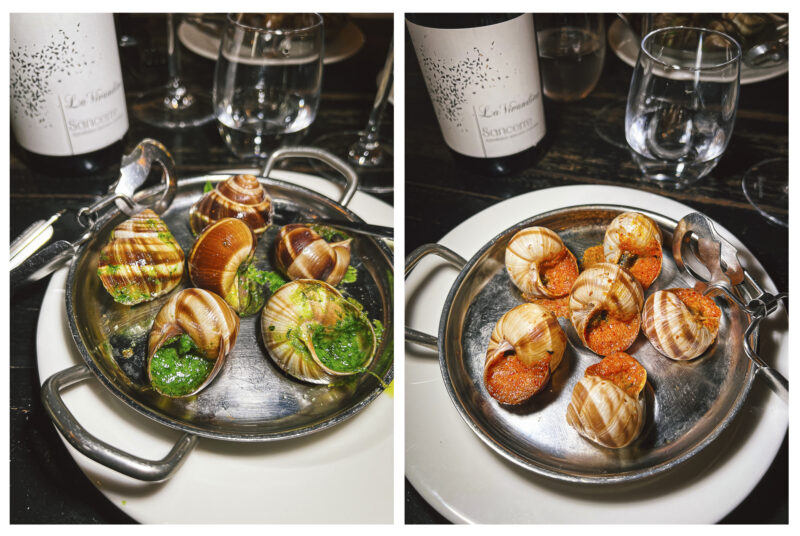
The rest of the menu
Besides the escargots, the menu offers specialties such as frog legs Escoffier's way, onion soup with puff pastry crust, pie with duck fillet, boeuf bourguignon and sole meunière. Desserts include the legendary crepe suzette, crème brûlée and chocolate fondant with crème anglaise. We go for the succulent rack of lamb for two, served with thyme gravy and a deliciously creamy dauphinois gratin.
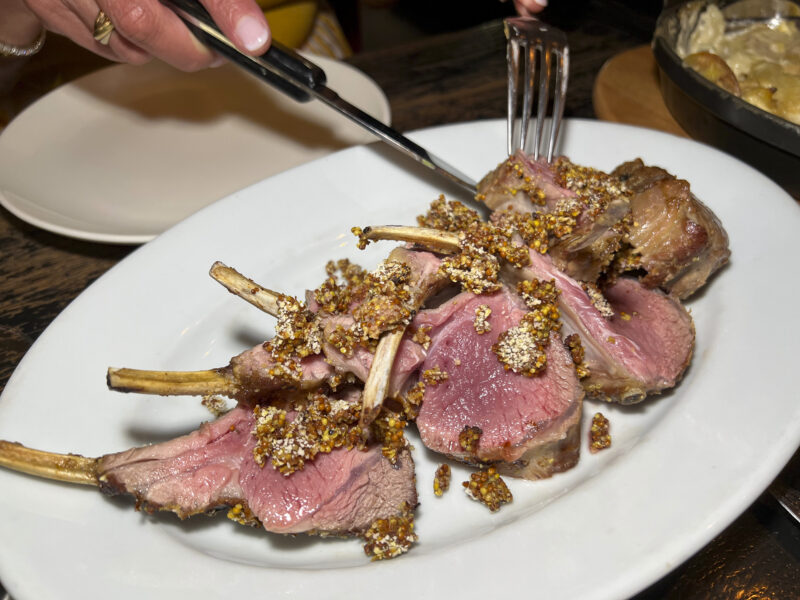
Eglise Sainte-Eustache, a jewel of Gothic art
In the heart of Les Halles stands St. Eustachius Church, one of the most beautiful and most visited churches in Paris. The church with its Gothic architecture is a jewel of the Renaissance. The church is unique for its size, its art collection and its exceptional organ, which is one of the finest musical instruments in France. Its rich, powerful sounds have given the organ worldwide fame. Concerts are organized regularly in the church. You can also hear the heavenly sounds of the organ every Sunday at 10:45 a.m., at the start of Sunday high mass.
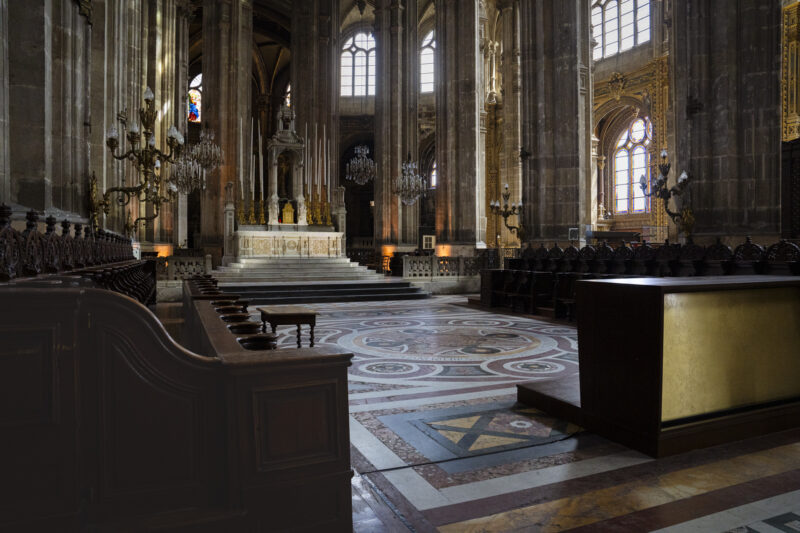
A major restoration project
St. Eustachius Church is undergoing a major restoration project to restore the building to its former glory. Reconstruction began in 2001 and were completed in 2024.
The present church was built on the foundations of a 13th-century chapel dedicated to the Roman martyr Eustachius. Saint-Denis Abbey donated his relics to the chapel at the time. The chapel became a church that further expanded as the population of the parish grew. In 1655, the administrator of the church had two chapels built under the towers of the front facade. This weakened the solidity of the structure to such an extent that the front facade and part of the side aisles were demolished. The construction of the new portal was never fully completed because the French Revolution put a stop to the project. The current restoration project will unveil the façade of St. Eustachius Church for the first time. You will once again be able to enter St. Eustachius Church through the main entrance after almost 200 years.
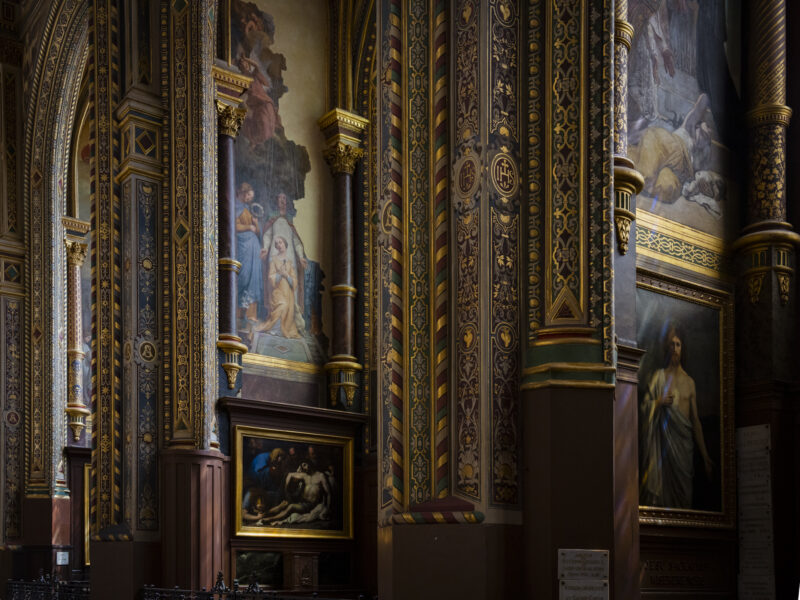
Dehillerin: 200 years of culinary tradition
The culinary story of the House of Dehillerin spans two centuries and begins with the hard work of Eugène de Hillerin, descendant of an old noble family from western France, ruined by the Revolution. He settles in Paris during the 1880s and pursues business success in the production and trade of hardware and household goods. He settles in the 15th arrondissement and buys a store that dates back to 1820. In 1890, he moves the store to rue Coquillière, the current address of the Dehillerin house.
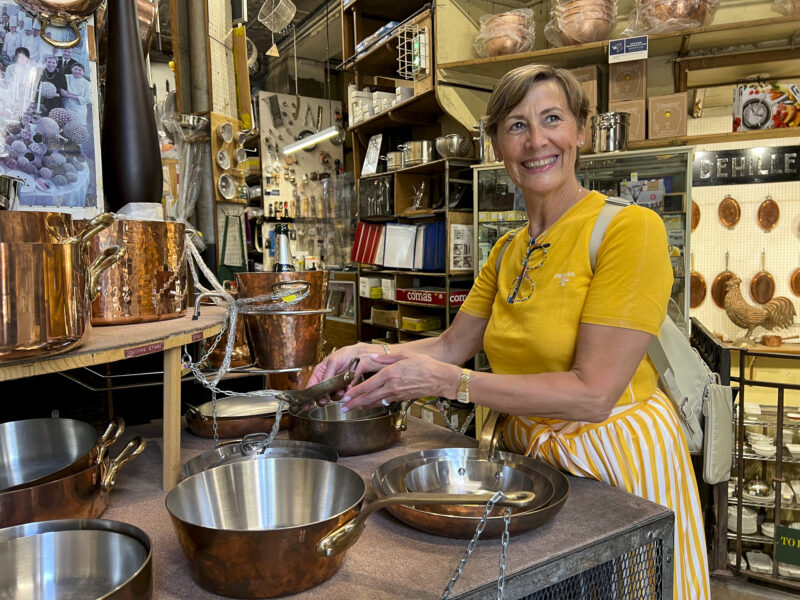
After his death in 1902, younger generations continued to follow in his footsteps. Dehillerin made a name for itself worldwide as a supplier of the best kitchen equipment on the market. Restaurateurs, pastry chefs, butchers and caterers, everyone finds the necessary equipment for their métier de bouche here. The fame and reputation of the house extend beyond the French borders. Kitchen equipment from Dehillerin is considered the ultimate, indispensable tool in the kitchens of great chefs and the elite worldwide. Father of French gastronomy Auguste Escoffier is a personal friend of Maurice Dehillerin. He supplies equipment to the White Star Line, destined for the Titanic, and to the Elysée. Food and TV idols Julia Child and Ina Garten, both passionate about French gastronomy, spread the Dehillerin name further among their American fans. Dehillerin is the mecca of every passionate cook and foodie, me included.
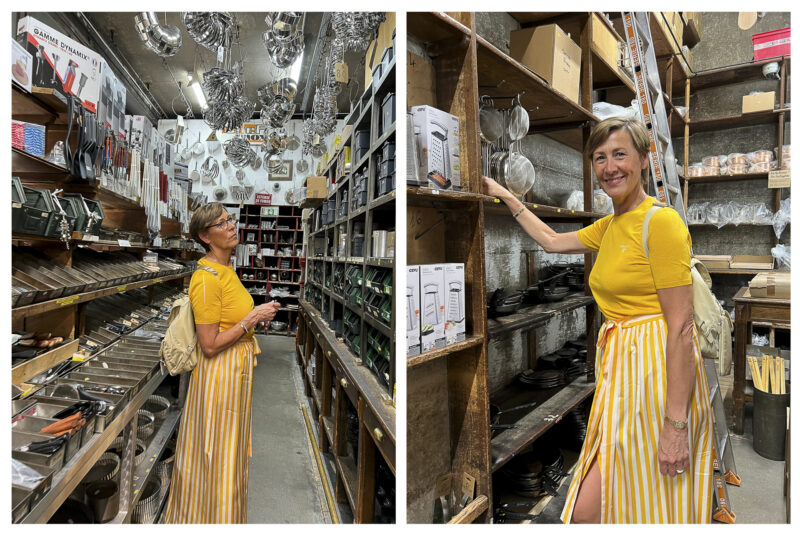
Dehillerin has an online shop with shipping abroad, but I prefer to browse the antique aisles full of history in person.